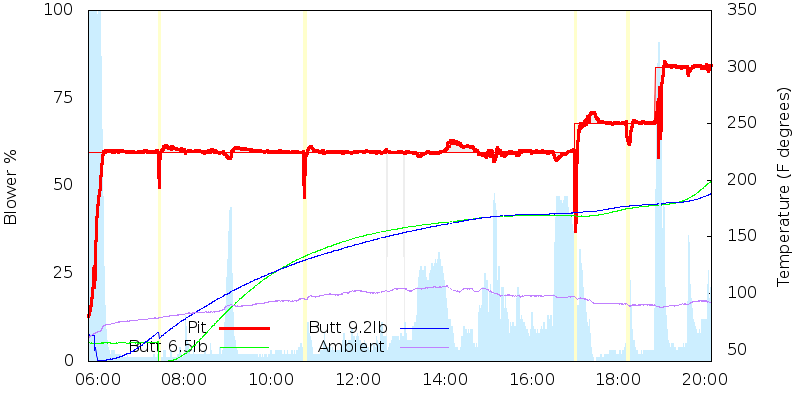John Mangan
TVWBB Member
Hey guys, FYI, it's been a crazy week at work trying to wrap up before Thanksgiving. I'm off next week so I plan to spend a decent amount of time back on this project.
- John
- John
Yeah that's fine. It should upload the 3 files and then dump the header. The "mockup.html" I manually change to "" before replacing the flashfiles.h, but you only have to do that if you modify the web files. The think in quotes is the name of the file the webserver serves. Because you want mockup.html to be the default page, you change it to "". I keep it renamed mockup for testing because it is a lot easier to test it from a real web server than upload it every time you make a change.Originally posted by john frank:
hmm... the only thing i see after completing this is the 3 files contained in "...\heatermeter\www\" no files from the parent directory are uploaded, also my mockup.html isn't converted to "". is this a concern? should i be disconnecting the the wishield before uploading the main sketch?
Good point on the serial, I'm now thinking of having the Linksys drive it with the second serial port. I'm putting some things together with a Java developer and should have some firm plans soon.Originally posted by john frank:
rj, the main problem i see with the pic serial controller is when you forget to unplug it before uploading code to the arduino. its pretty easy to corrupt the firmware when dumping a new sketch to your board. (ask me how i know) reflashing the pic requires a pic programmer. the other obvious issue is price. otherwise, they are very easy to use and can save you a whole bunch of time!
Originally posted by Ed Pinnell:
<BLOCKQUOTE class="ip-ubbcode-quote"><div class="ip-ubbcode-quote-title">quote:</div><div class="ip-ubbcode-quote-content">Good point on the serial, I'm now thinking of having the Linksys drive it with the second serial port. I'm putting some things together with a Java developer and should have some firm plans soon.
What's unusual about that link is they start talking exponential functions and calculus, but what all they end up doing is a simple amplified derivative. I've tried that and it doesn't produce very good results. Theirs looks great because they found the best constants to fit the data of the exact test. Mine looks something like this with a 20 minute time window and an "a" value of arrround 0.9One other project that I'd like to play with once the basic setup is done, is a variation on this project from nerdkits.com
http://www.nerdkits.com/videos/meat_thermometer/
They use a little calculus to make a slow read meat thermometer considerably closer to an instant read type. I think this formula can be changed and since we know the final temp(what they are trying to solve for) but what we care about is time( when will the food be done) we could use the same idea to get an estimate of when the meat will reach its final temp.


Originally posted by Bryan Mayland:
.... Theirs looks great because they found the best constants to fit the data of the exact test.
... Given an exponential decay reaches within 1.8% of its final value at 4 time constants, it should follow that I'd hit 162.75F at the 16 hour mark. However I hit it at 2:08pm, or at 8 hours 10 minutes. For some reason the math doesn't work out.
Yeah that's what it is. The thermistor is inside the case and actually about 1/4" from the MOSFET so it's not really a good indicator of anything besides showing it gets warm inside that project box. At the beginning you can see the 6.5lb butt probe (which isn't in meat for the first hour and a half) is at 56.7F while the Ambient reads 76.0F. Only one of those is accurateI also find it remarkable that ambient temps in FL are in the 90s at 8:00p in November...here in SoCal, it's probably in the 50s or low 60s at that time. But I think you said your thermistor is inside the heatermeter enclosure, didn't you?
